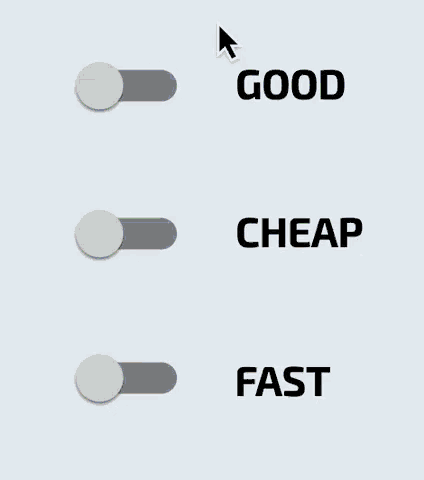
Ask my so called “Competition” these three questions
![]() Do the other guys Pick Axe by hand with a Pick Axe, 6 – 8 inches deep, before they use the RotoTiller machine ?.
Do the other guys Pick Axe by hand with a Pick Axe, 6 – 8 inches deep, before they use the RotoTiller machine ?.
If they don’t Pick Axe first there is no way the RotoTiller machine CAN / WILL RotoTill as deep as it’s supposed to.
![]() How deep, will they put in writing, Will the RotoTiller machine go ? If it’s not in writing in their bid/estimate how can you hold their feet to the fire ?
How deep, will they put in writing, Will the RotoTiller machine go ? If it’s not in writing in their bid/estimate how can you hold their feet to the fire ?
Our written Bid / Estimate says we RotoTill 6 – 8 inches deep
![]() What, if anything at all, will the other guys be mixing into your soil ? What are they going to “Amend” your soil with ? And how much ?
What, if anything at all, will the other guys be mixing into your soil ? What are they going to “Amend” your soil with ? And how much ?
Our bid says in writing that we bring and spread a 3 inch layer of Compost, and then RotoTill again to mix that 3 inches all through out your 6 – 8 inches of Top Soil. Our bid calculates and shows you the math regarding how we determine how much Compost that we are bringing and mixing deeply into your soil to amend and restore and rejuvenate your soil with.
![]() Because of our transparent, upfront, straight forward, out in the open business model and allowing the potential customer to create their own bid/estimate online on our website and select each option and build your own to suit your budget bid/estimate vs. the other guy’s throwing out some mysterious unjustified number without any back up or explanation of what you should expect in exchange for your money.
Because of our transparent, upfront, straight forward, out in the open business model and allowing the potential customer to create their own bid/estimate online on our website and select each option and build your own to suit your budget bid/estimate vs. the other guy’s throwing out some mysterious unjustified number without any back up or explanation of what you should expect in exchange for your money.
![]() Because we don’t have to drive around to create bids, we are able to focus on the job sites that we are currently working on and finish what we are doing before being interrupted by another project. We can get more jobs started and finished each week, We end up being more profitable each week, And We can afford to purposefully charge, on average, 20% less than our so-called “Competition.”
Because we don’t have to drive around to create bids, we are able to focus on the job sites that we are currently working on and finish what we are doing before being interrupted by another project. We can get more jobs started and finished each week, We end up being more profitable each week, And We can afford to purposefully charge, on average, 20% less than our so-called “Competition.”
Once you hire RotoTillerGuy, we aren’t distracted and leaving to give someone else a bid. We are committed and Focused on starting and finishing your project, and then the next, and the next.
![]() Because we aren’t leaving and stopping and starting multiple job sites, because we do projects one at a time, first come first serve, we are just simply faster, getting in and out and on to the next job, and the next. We are faster and more efficient.
Because we aren’t leaving and stopping and starting multiple job sites, because we do projects one at a time, first come first serve, we are just simply faster, getting in and out and on to the next job, and the next. We are faster and more efficient.

If a customer wants an area to become a sitting area of Decomposed Granite, 4” thick. The area is 15’ 9” wide by 18’ 3” long.
Answer:
15’ 9” = 15.75
18’ 3” = 18.25
15.75 * 18.25 = 287.4375 Square Feet or Area
Answer:If you want to put DG in, you first need to make room and remove a 4” layer of Soil. Unless you are just going to Pile the 4” layer of DG up on top of the soil, creating a 4” step up ?
A Cubic Foot is basically 12 inches LONG by 12 inches WIDE by 12 inches TALL. Within that Cube 4 inches TALL goes into 12 inches TALL 3 times. One Cubic Foot can cover 3 Square feet with a 4 inch layer. So 287.4375 / 3 = 95.8125 Cubic Feet. You need to remove and dispose of 95.8125 Cubic Feet of Soil. 95.8124 Cubic Feet / 27 = 3.54861111 Cubic Yards. A yard is basically 3 feet long * 3 feet wide * 3 feet tall, 3 * 3 * 3 = 27. A Cubic Yard of Soil roughly weighs one ton (2,000 lbs). So 3.548611 tons, 7,097.22 lbs. think Labor and Time and expense.
Answer: Same amount, same volume needs to be purchased, delivered, moved into place.
Answer: Stabilized DG will congeal and solidify into a pad. UnStabilized DG is a sand pit that turns into a Cat Box for the neighborhood cats, and gets kicked around and eventually lost as people walk in and out of the area.